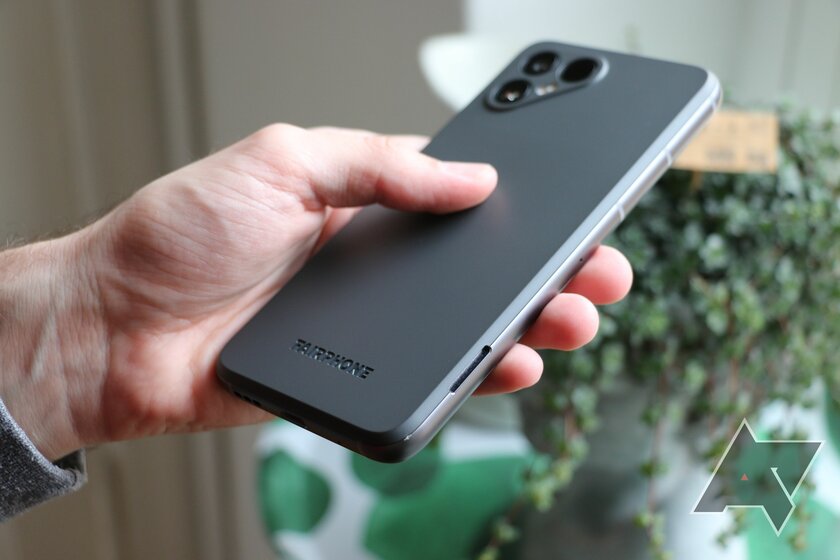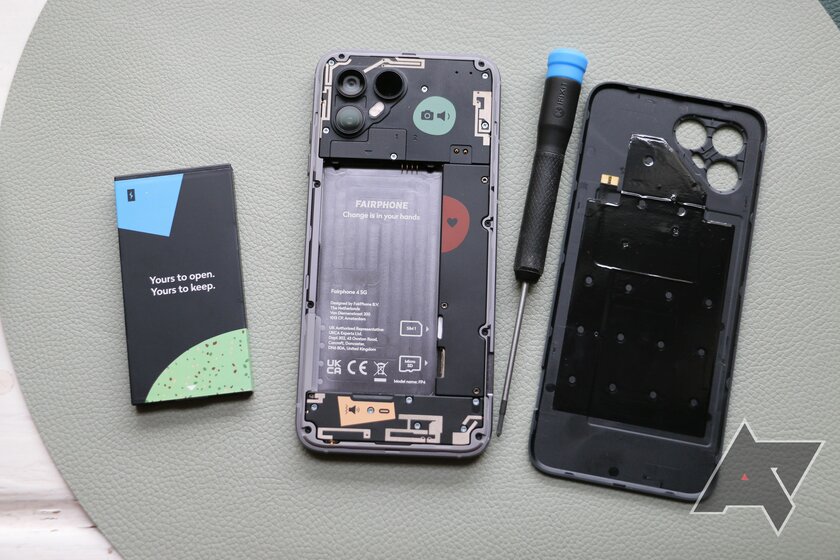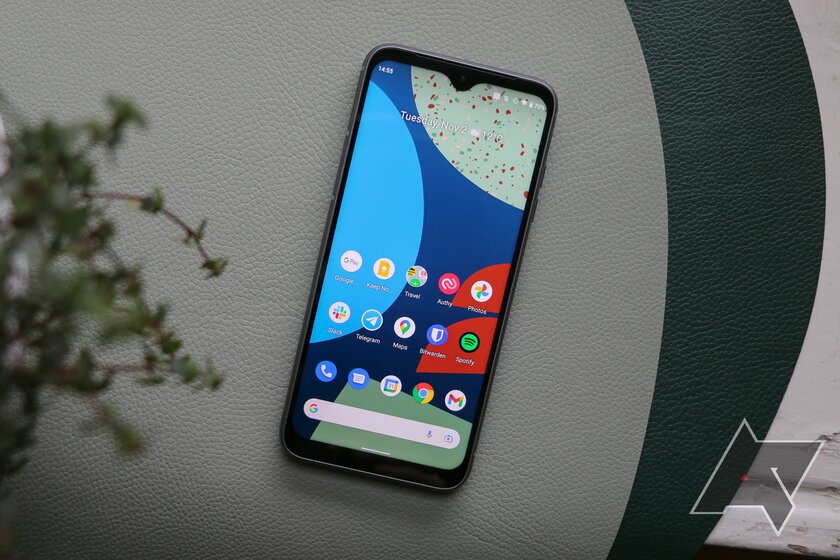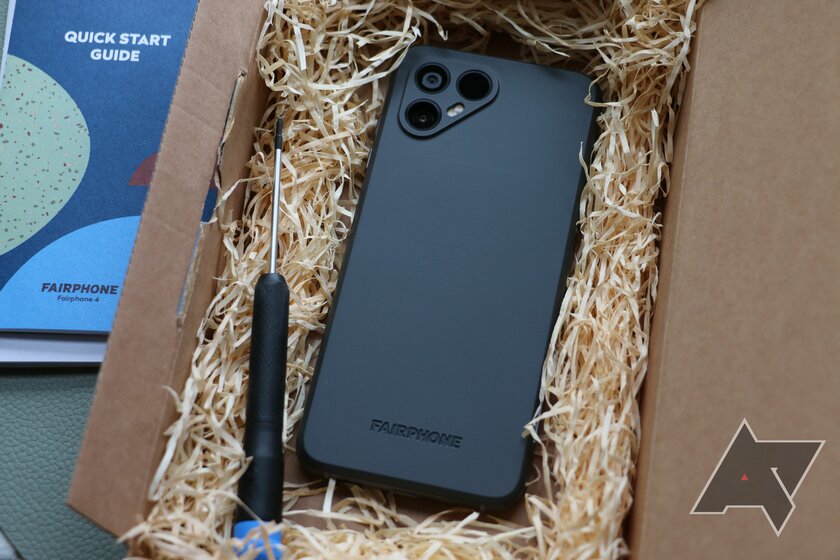In 2013, the Dutch startup Fairphone was launched, which released the smartphone of the same name without “conflict minerals” (gold, tin, tantalum and tungsten). In 2015, the company released the modular smartphone Fairphone 2, the main idea of the project was to provide users with a durable device that is easy to repair. He and Fairphone 3 (2019) received 10 out of 10 points on the maintainability scale on the iFixit profile portal, and now, in 2021, the company has released Fairphone 4 with modern characteristics, but still the same main feature – modular design.
The smartphone comes with a 5-year manufacturer’s warranty. The kit does not include a cable, power adapter and other devices due to environmental concerns – buyers who need them should get them themselves. At the time of this writing, the prices for Fairphone 4 on the official website are as follows:
- 6/128 GB – 579 euros;
- 8/256 GB – 649 euros.
Replacement parts sold separately: battery (€ 30), main camera unit (€ 80), front camera (€ 30), USB-C port (€ 15), normal speaker (€ 20), earpiece (€ 15), as well as display and back cover.
Specifications
- Display: 6.3 inches, IPS, 2340 × 1080 pixels, 60 Hz.
- Processor: Snapdragon 750G.
- RAM: 6 or 8 GB.
- User memory: 128 or 256 GB, microSD support.
- Main camera: 48 megapixels (main) + 48 megapixels (telephoto).
- Front camera: 25 MP.
- Battery: 3900 mAh, USB-C.
- Dust and water protection: IP54.
- Biometrics: Fingerprint Scanner.
- NFC chip: yes.
- Wireless: Wi-Fi 802.11a / b / g / n / ac, Bluetooth 5.1 + LE.
- Pre-installed operating system: Android 11.
- Dimensions: 162 × 75.5 × 10.5 mm.
- Weight: 225 grams.
Design and equipment
The smartphone received a plastic back cover through which a protruding block of cameras of an unusual triangular shape is cut through. The frame is made of eco-friendly aluminum and it adds a premium touch. An excellent fingerprint scanner is built into the power button on the right, where there are also two volume buttons. They are all clickable and responsive.

When the cover is removed, almost every modular component will be marked with a part mark on top of it. The battery immediately catches the eye, which can be easily pulled out by a simple lifting – just like in old phones. Replacing other components such as cameras, USB ports, or speakers will take a little longer by unscrewing the screws.

Looking at the Fairphone 4, its 6.3-inch 60Hz IPS display seems dated. There is a huge chin on the bottom, and on top there is a teardrop notch for the front camera. The screen does not appear to be laminated and looks slightly recessed into the body. The display matrix itself suffers from uneven and not too high brightness around the edges – however, this has ceased to be conspicuous after some time of use. The viewing angles are quite wide, but after passing a certain deviation threshold, the brightness begins to decrease. Apparently, this is a price to pay for high maintainability (and a desire to reduce costs).

The main flaw in the Fairphone 4 is the headphone jack is gone. Now you need to either use an adapter for USB-C, or switch to wireless technologies (by the way, the first branded TWS headphones appeared in the Fairphone catalog). The manufacturer said it had to ditch the 3.5mm port to make room for other components. It looks strange, because the company positions itself as striving to produce devices with the maximum service life and high maintainability, but at the same time it sells headphones that are easily lost and cannot be repaired (although they are 30% made of recycled plastic, and also have a certified supply chain ).

The vibration motor has become another disappointment – it is too gentle and does not know how to “knock”. Perhaps this is also due to maintainability, because more sophisticated models are more difficult to install.
Software, performance and battery
The Android 11 firmware is pretty close to a pure green robot. Some interface elements look more boxy, but these differences are certainly not striking. However, a few changes are annoying. Firstly, there are practically no indents around certain elements: for example, the clock and the battery status icon practically cut into the rounded corners, and when using gesture navigation, the Google Assistant prompts almost completely disappear behind the lower corners. In addition, the firmware displays the name of the mobile operator in the upper left corner, and this cannot be disabled in any way – if it has a long name, then the notification icons simply will not fit in the status bar.

Also, the manufacturer has increased the speed of animation – such a trick should appeal to a certain circle of users. The base version of Fairphone 4 combines a Snapdragon 750G with 6GB of RAM and 128GB of user storage, and the smartphone almost flies with that stuff. I barely encountered any stuttering or stuttering in animations, apps always opened quickly, and multitasking allowed many apps to be used at the same time. I’m still not completely convinced that this bundle of components has a performance margin for the 5 years for which the smartphone is positioned, but this is definitely a more advantageous starting position than its predecessor Fairphone 3.

I am very glad that the company did not inflate the smartphone software. Fairphone 4 does not duplicate Google applications, and of the additional ones there are only useful tools like a voice recorder or a user manual.
The smartphone supports 5G, but I cannot test it in any way. But there are no problems with LTE – the connection is completely comparable to that provided by smartphones at a similar price. However, when buying, it is better to make sure that the ranges are compatible.
The 3900 mAh battery does not seem impressive, but in fact it is very even. I was not able to completely discharge it in one day, usually a third of the charge remained by night with about five hours of screen time. The same is true of the days when I used the mobile internet a lot and took pictures.
Cameras
The triple block of main cameras looks interesting, and their work is … expected. The manufacturer may have even surpassed all expectations by equipping the smartphone with a 48MP main camera, a TV camera with the same resolution and laser autofocus, but obviously it does not have the same computational photography resources that Google, Apple or Samsung can boast.

Photos tend to come out normal, and at first glance are suitable for posting on social networks, but there are some inconsistencies. The smartphone tends to overexpose glare, sometimes glueing the details into a monotone white where the Pixel could display contours and details. This is especially problematic when photographing people on the street against a bright background or when trying to photograph a check. However, with less contrasting images, things are better.




In low light conditions, the cameras can’t match the competition for their price, even when using night mode. You can forget about taking pictures of people when there is little movement in less than ideal lighting conditions, and night mode does not even help to significantly brighten the scene. The implementation of this function also prevents access to the zoom or wide-angle camera. And the shutter button is downright annoying with its slowness – it even goes so far as when you think you just didn’t press it.
Also, I ran into autofocus issues a lot. Sometimes the camera completely ignores faces, focusing instead on the grass and trees behind the main subjects.



To summarize, cameras are generally okay if you just want to take pictures for social media or messengers, but don’t expect the Fairphone 4 to come close to Google or Samsung. However, there is a chance to wait for some third-party camera improvements, as was the case with the Fairphone 3.























Should you buy?
Yes. Fairphone 4 is a significant step forward for the company, and this is the first time that I can definitely recommend a smartphone to those who value a maintainable and durable gadget. While it does have some issues like the camera, display and vibration motor, these are not major drawbacks given its focus. I am also very happy that the manufacturer has finally chosen a processor with which the smartphone will not suffer from a lack of power in the coming years.
However, I still agree that the iPhone is almost a complete replacement. Apple gadgets have historically been one of the longest-updated devices, with over five years of software support becoming the norm. Apple also has a huge network of repair shops, both authorized and third-party. Of course, iPhone repairs are much more difficult and more expensive, and the Cupertino-based manufacturer doesn’t care as much about their supply chain, but if Fairphone 4 is difficult to buy in your area or if you want to get software updates quickly, then the iPhone is the right place. …

There are alternatives in the Android world too, and the closest are Google’s Pixel smartphones, which now come with five years of security patches. Plus, the Pixel 6 and 6 Pro look really cool. What’s more, Google has switched to using more recycled materials, including the aluminum cases of its smartphones. But maintainability, of course, is significantly worse than that of the Fairphone 4.
Buy if …
- you need a green smartphone from a company that cares about the environment and their supply chain;
- you need a gadget with a replaceable battery.
DO NOT buy if …
- the smartphone is poorly compatible with the frequencies of telecom operators in your region;
- you need the fastest software updates. In this case, Pixel, Galaxy or iPhone are the best choice.
pros
- Easy to repair.
- Replaceable battery.
- Modern design (relatively).
- Good performance with a margin for the coming years.
Minuses
- Display illumination is uneven.
- Low-power vibration motor.
- Senseless deviations from pure Android in some elements of the firmware.
- Lack of a headphone jack.
This is a translation of the Android Police review.
Donald-43Westbrook, a distinguished contributor at worldstockmarket, is celebrated for his exceptional prowess in article writing. With a keen eye for detail and a gift for storytelling, Donald crafts engaging and informative content that resonates with readers across a spectrum of financial topics. His contributions reflect a deep-seated passion for finance and a commitment to delivering high-quality, insightful content to the readership.






